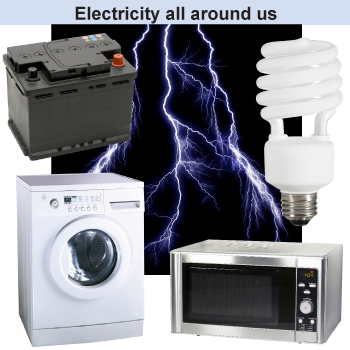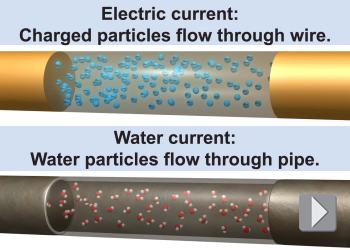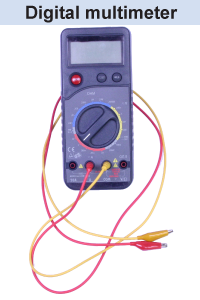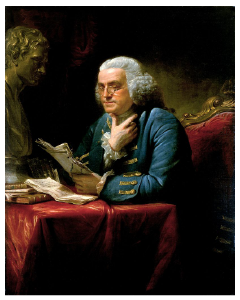|
 Devices that use electricity are all around us: for example, light bulbs, toasters, computers, cellphones, and televisions. Electricity is also found throughout the natural world, such as in lightning and the electric eel. You even have electrical signals traveling through the central nervous system, heart, and other muscles of your body. Electrical energy powers our modern lives, but like all technologies there are risks as well as benefits. Electricity is extraordinarily useful but it can also be dangerous. This section introduces electricity and electric current.
Devices that use electricity are all around us: for example, light bulbs, toasters, computers, cellphones, and televisions. Electricity is also found throughout the natural world, such as in lightning and the electric eel. You even have electrical signals traveling through the central nervous system, heart, and other muscles of your body. Electrical energy powers our modern lives, but like all technologies there are risks as well as benefits. Electricity is extraordinarily useful but it can also be dangerous. This section introduces electricity and electric current. 
|
Electric current
|
The word electricity usually refers to the flow of electric current, typically through wires, conductors, and other electrical devices. We use electrical energy carried by electric current to power many devices, such as mobile phones, light bulbs, and electric stoves. Electric current is the flow of charged particles, usually electrons, inside a material that conducts electricity. 
|
 Although electric current is invisible, you can visualize the concept by imagining the flow of water through a pipe. Just as the flow of water molecules carries mechanical energy that can power a hydroelectric generator, the flow of charged particles in a wire carries electrical energy that can do work, such as powering an electric motor. Just as pipes carry water through a house, wires carry electricity through a circuit.
Although electric current is invisible, you can visualize the concept by imagining the flow of water through a pipe. Just as the flow of water molecules carries mechanical energy that can power a hydroelectric generator, the flow of charged particles in a wire carries electrical energy that can do work, such as powering an electric motor. Just as pipes carry water through a house, wires carry electricity through a circuit. 
|
 Electric current is measured in units called the ampere (A), or amp. If a wire carries 1 A of current, this means that 6.2×1018 electrons move across any cross section of the wire each second. One amp is a substantial amount of current, enough to power four household light bulbs. The electrical signals your body uses to control muscles are more typically in fractions of a milliampere (mA): 1 mA = 0.001 A. Many small electrical devices also use current in milliamperes. Electric current can be measured using an ammeter or the “amps” setting on a digital multimeter.
Electric current is measured in units called the ampere (A), or amp. If a wire carries 1 A of current, this means that 6.2×1018 electrons move across any cross section of the wire each second. One amp is a substantial amount of current, enough to power four household light bulbs. The electrical signals your body uses to control muscles are more typically in fractions of a milliampere (mA): 1 mA = 0.001 A. Many small electrical devices also use current in milliamperes. Electric current can be measured using an ammeter or the “amps” setting on a digital multimeter. 
 |
 In the 18th century, Benjamin Franklin conducted many experiments to study the properties of electricity. During his investigations, he realized that there were two opposite kinds of charge. At some time around 1750, he made the decision to label the charge from one particular kind of static electricity process as positive, and likewise he called the charge produced by a different process as negative. Those terms have stuck with us ever since. Franklin knew nothing about electrons at the time, so he could not have known that most electric current consists of the motion of electrons, which we call negative charge. What this means for us today is that the electric current in a circuit is drawn to be the direction of travel for positive charges; if electrons are the moving charges in that circuit, then they are moving in the opposite direction.
In the 18th century, Benjamin Franklin conducted many experiments to study the properties of electricity. During his investigations, he realized that there were two opposite kinds of charge. At some time around 1750, he made the decision to label the charge from one particular kind of static electricity process as positive, and likewise he called the charge produced by a different process as negative. Those terms have stuck with us ever since. Franklin knew nothing about electrons at the time, so he could not have known that most electric current consists of the motion of electrons, which we call negative charge. What this means for us today is that the electric current in a circuit is drawn to be the direction of travel for positive charges; if electrons are the moving charges in that circuit, then they are moving in the opposite direction. 
|
Which of the following best describes electric current? - the flow of electrons down a path
- the force between nearby electrons
- the movement of electrons around a nucleus
- the movement of molecules in a substance
 |
The correct answer is a, the flow of electrons down a path. Flowing electrical charges, usually electrons, is what creates an electrical current. 
|
| |
|

